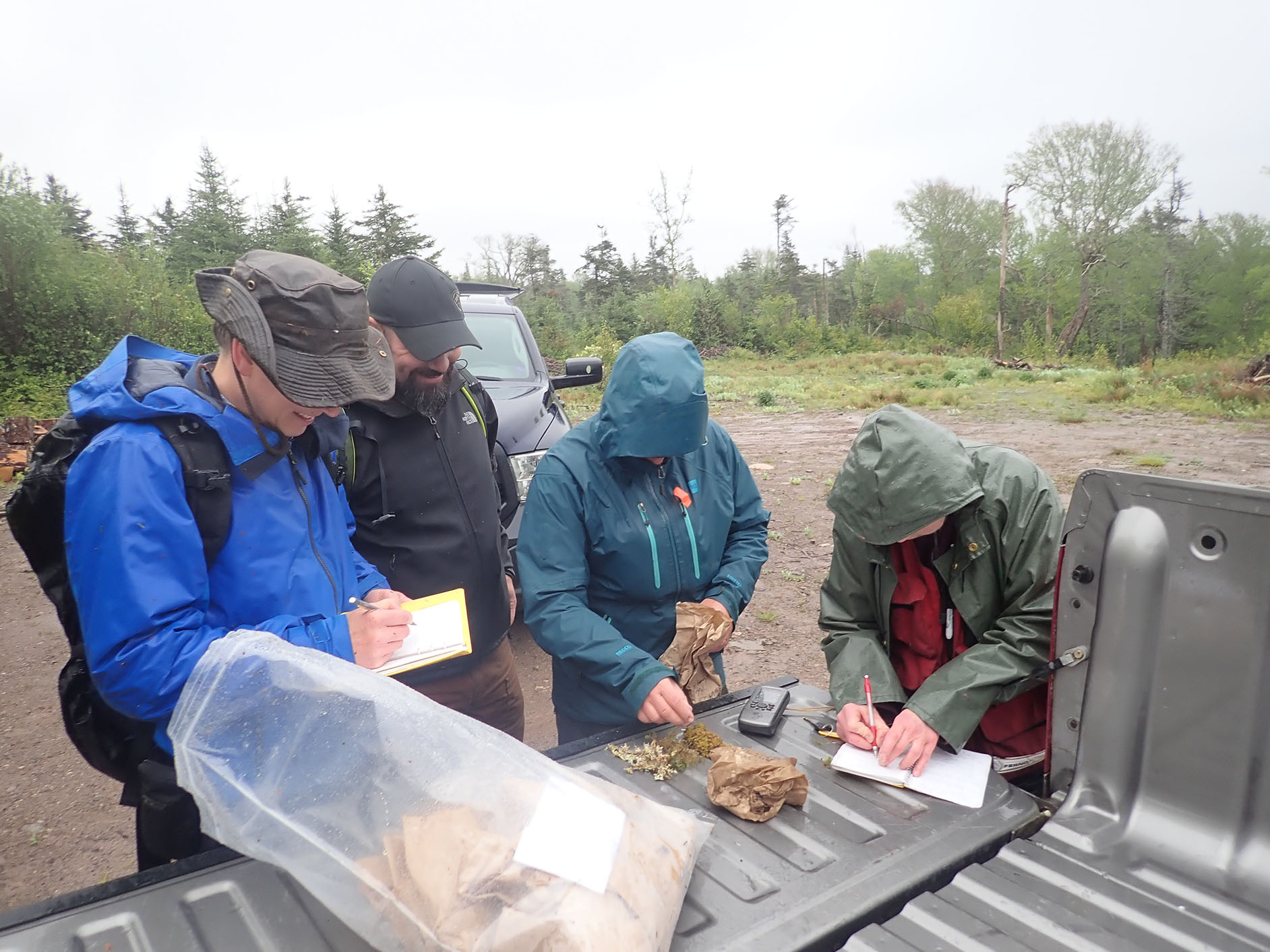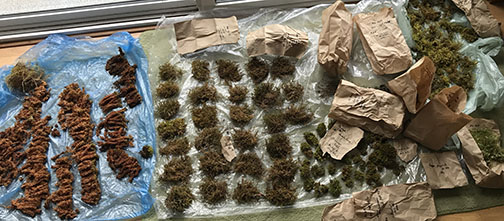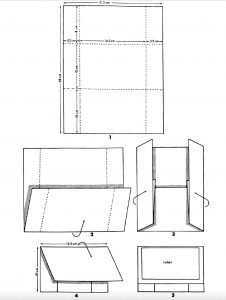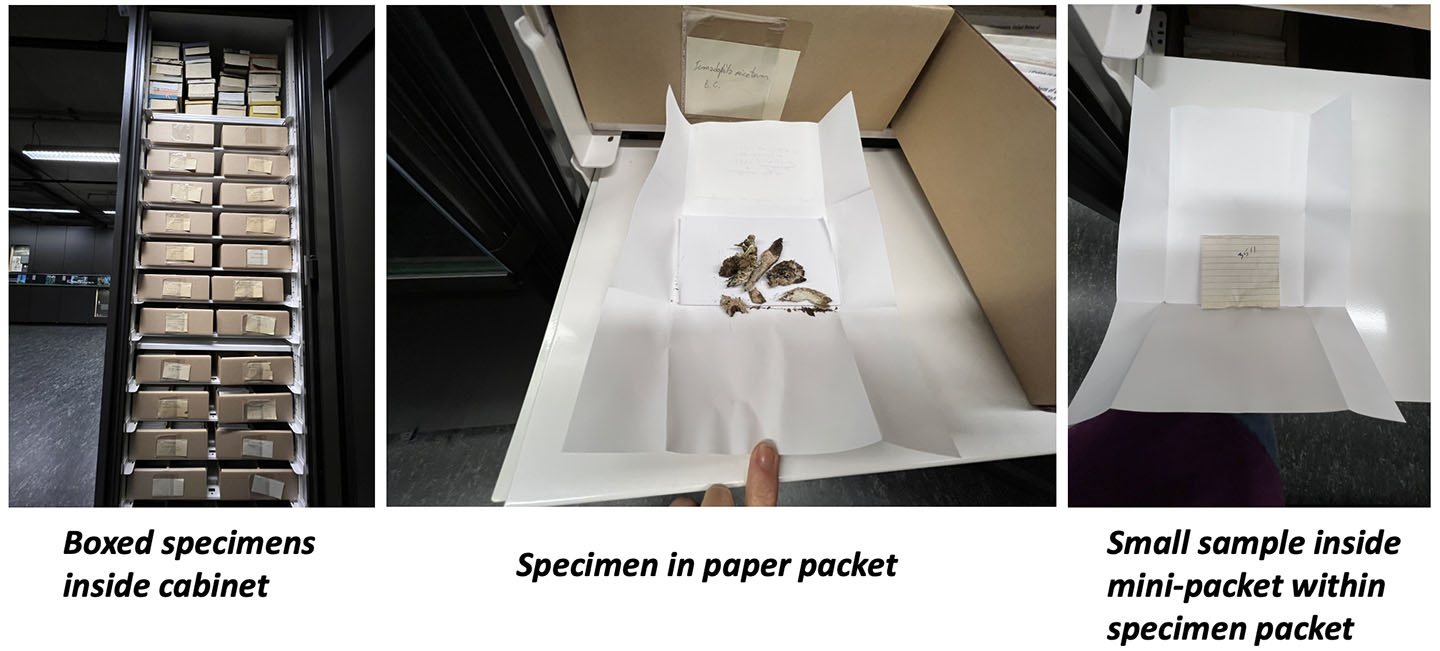Bryophyte, lichen, and fungus specimens are generally not flattened and mounted on paper like vascular plants and seaweed. They are often stored in packets and then arranged in boxes within the herbarium cabinets. A home collection can be stored in small boxes such as shoe boxes.

Drying
Collecting bryophytes and lichens in paper bags has a number of benefits – one is using it as a container, while the other is that samples will quickly dry in the bag as long as it is not too full. Large samples can be placed on newspaper or similar material and air dried. Mosses and lichens can generally be revived from the dry state and identified easily. Liverworts, on the other hand, may be stored moist and refrigerated for a brief time until identification and then dried similarly to mosses.

Paper bags can be used too for fungi – some collectors like to wrap them in wax paper during collecting. Generally fungi are wetter and need more careful drying. A source of air flow and warmth is required with temperatures ranging between 40 and 45 degrees celsius. Fruit dryers are ideal.
Packaging
Paper packets are generally made for bryophytes, lichens, and fungi. A standard piece (8×11) of acid-free paper should be used. The dimensions for folding will vary depending on the size of the storage box. See folding instructions below. The specimen is placed inside of the packet – Do not use adhesives such as tape or glue to secure; the top flap will secure your specimen and allow you to freely access it. If the sample is small you can make a smaller envelop to store within the larger one.
In some cases fungi may be odd sizes or in the case of slime molds (not fungi) really small so special packaging is used. Plastic bags are often used for fungi – in these cases the sample must be thoroughly dried.
Slime Mold – save those matchboxes
Slime mold is often collected with a piece of substrate. Match boxes are a great size for tiny specimens. A drop of white glue is

Labelling
A very important aspect of a collection is the label which is attached to each packet. It will be affixed to the outer flap of the folded paper packet or included in another format to other types of packaging.
Labels should contain the following information:
- Identity of the specimen (species and the authority).
- Habitat, including substratum, elevation (when known, in m), general vegetation type in which it occurs, exposure to light, etc.
- Geographic locality, including country, province, nearest politically named locality (or distance and cardinal direction from the locality in km) with its approximate latitude and longitude if possible in decimal degrees.
- Collector’s name, date collection was made, collection number.
- Names of people who accompany you.
- Determiner’s name, date determination was made.
- For bryophytes, indicate if the material has sporophytes (c.fr.)

Closed labelled packet

Open packet with specimen



